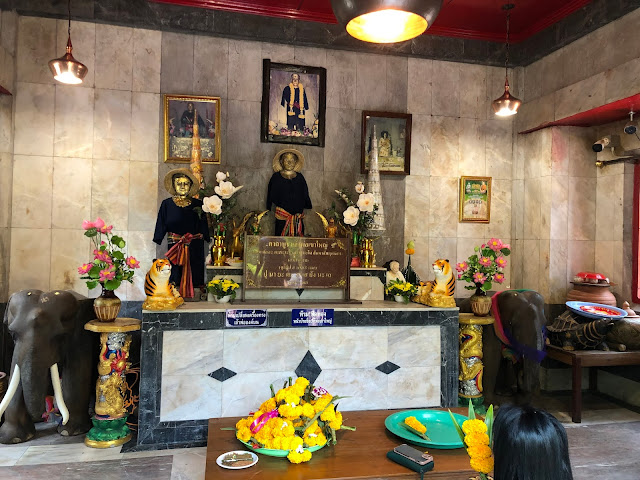Nathlaung Kyanung, west of Thatbyinnyu is the only surviving Hindu temple dedicated to Vishnu in Bagan.
History of temple:
The time of its construction is debatable as after King Anawrahta ascended the throne in 1044, he started spreading Thervada Buddhism. So, it must have been constructed during the reign of King Nyaung-U- Sawrahan, known as Taungthugyi around 961, a century before Thervada Buddhism was introduced.
Another theory says that it was built by King Anawrahta as a place to keep all non-Buddhists religious images as he wanted to strengthen Thervada Buddhism. This temple became a place to where Hindus devas and Burmese nats were kept. The temple therefore for Burmese meant "shrine confining nats".
For Hindus, it was Nath-daw-Kyaung meaning the "Shrine of the Sacred Devas" or Nat-hl-khaung translating to "Shrine of the reclining Deva" because of the reclining Vishnu inside the shrine. The temple is said to be constructed between 1044 to 1077.
What's special about this place?
This is the only surviving Hindu temple in Bagan.
Look for good images of Vishnu which are quite well maintained.
Goddess Brahmani is considered as the Shakti of Brahma and sits on a swan.
There must have been reliefs in the empty spaces but that is all gone.
The temple was badly damaged in the 1975 earthquake, but at least only the main hall and a part of shikhara remain.
The time of its construction is debatable as after King Anawrahta ascended the throne in 1044, he started spreading Thervada Buddhism. So, it must have been constructed during the reign of King Nyaung-U- Sawrahan, known as Taungthugyi around 961, a century before Thervada Buddhism was introduced.
Another theory says that it was built by King Anawrahta as a place to keep all non-Buddhists religious images as he wanted to strengthen Thervada Buddhism. This temple became a place to where Hindus devas and Burmese nats were kept. The temple therefore for Burmese meant "shrine confining nats".
For Hindus, it was Nath-daw-Kyaung meaning the "Shrine of the Sacred Devas" or Nat-hl-khaung translating to "Shrine of the reclining Deva" because of the reclining Vishnu inside the shrine. The temple is said to be constructed between 1044 to 1077.
What's special about this place?
This is the only surviving Hindu temple in Bagan.
Look for good images of Vishnu which are quite well maintained.
very faint, hardly inlegible tablet on the side of temple
There is a mandapa, a porch, outside the temple. It was originally covered by a wooden canopy. The shikhara is almost damaged. On its side, Ngakywenadaung Pagoda which is a 10th century pagoda. It is 13 meter bulbous Pyu style pagoda.
There is an image of reclining Vishnu in an alcove on entering the main hall.
On top are two images of Goddess Brahmani.There is an image of reclining Vishnu in an alcove on entering the main hall.
Goddess Brahmani is considered as the Shakti of Brahma and sits on a swan.
reclining Vishnu
Brahma is said to have come out of the navel of Lord Vishnu, so he is sitting in the center above Vishnu. Since, Brahma is the creator, he has Yama, the god of death on one side and Chitragupta, who keeps record of our deeds on the other side.
Vishnu image mounted on wall
Vishnu image
Vishnu image, frescos on wall which is very faint. Must have been covered all over earlier.
a small part of fresco, but impossible to decipher
a small part of fresco, but impossible to decipher
Mahazedi pagoda as viewed from a window inside the temple
There were statues of 10 incarnations of Vishnu on its outer wall, just a few remain. Some of them have been stolen away as in picture above. A German engineer smuggled a large Vishnu image seated on Garuda. It is now in a museum in Berlin.There must have been reliefs in the empty spaces but that is all gone.
image behind grills
some of them are damaged. It is impossible to figure out what they are.The temple was badly damaged in the 1975 earthquake, but at least only the main hall and a part of shikhara remain.



















































